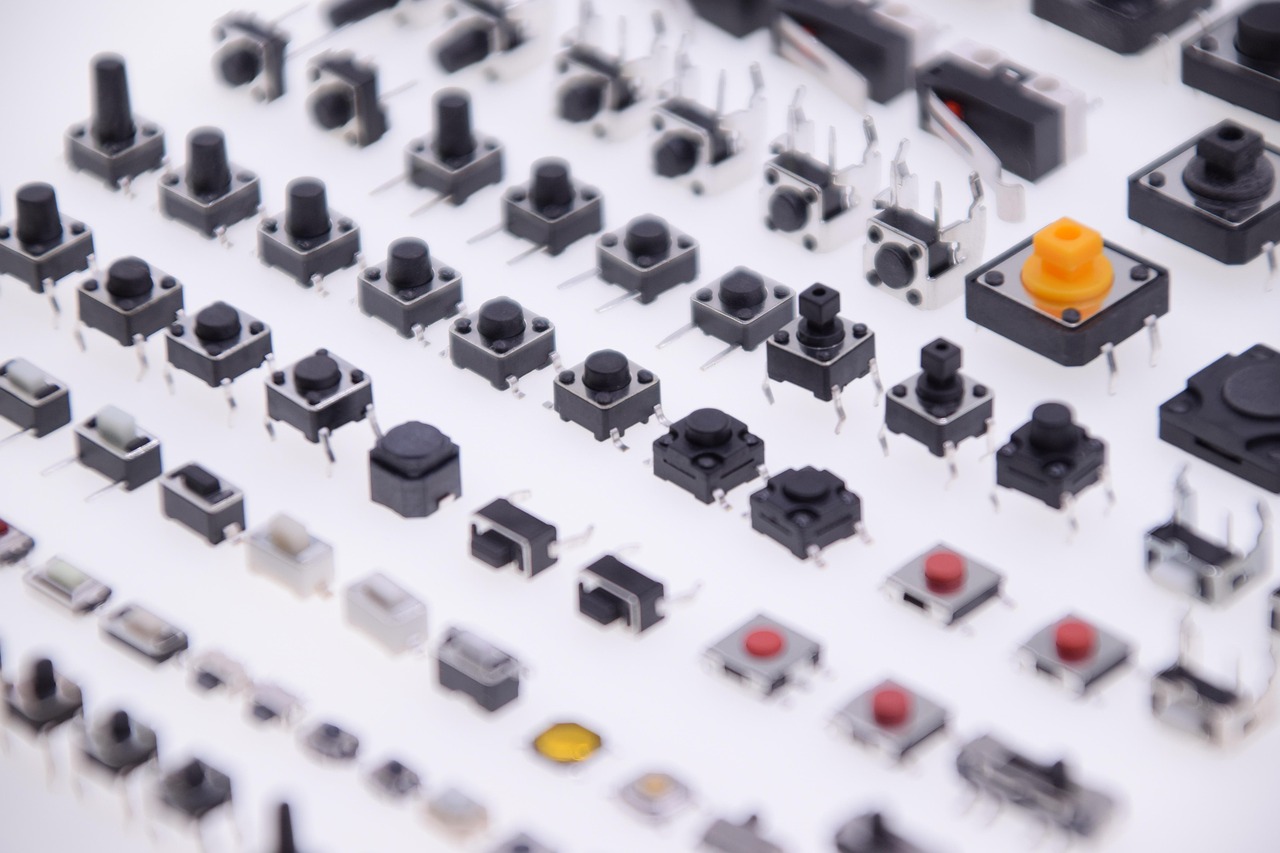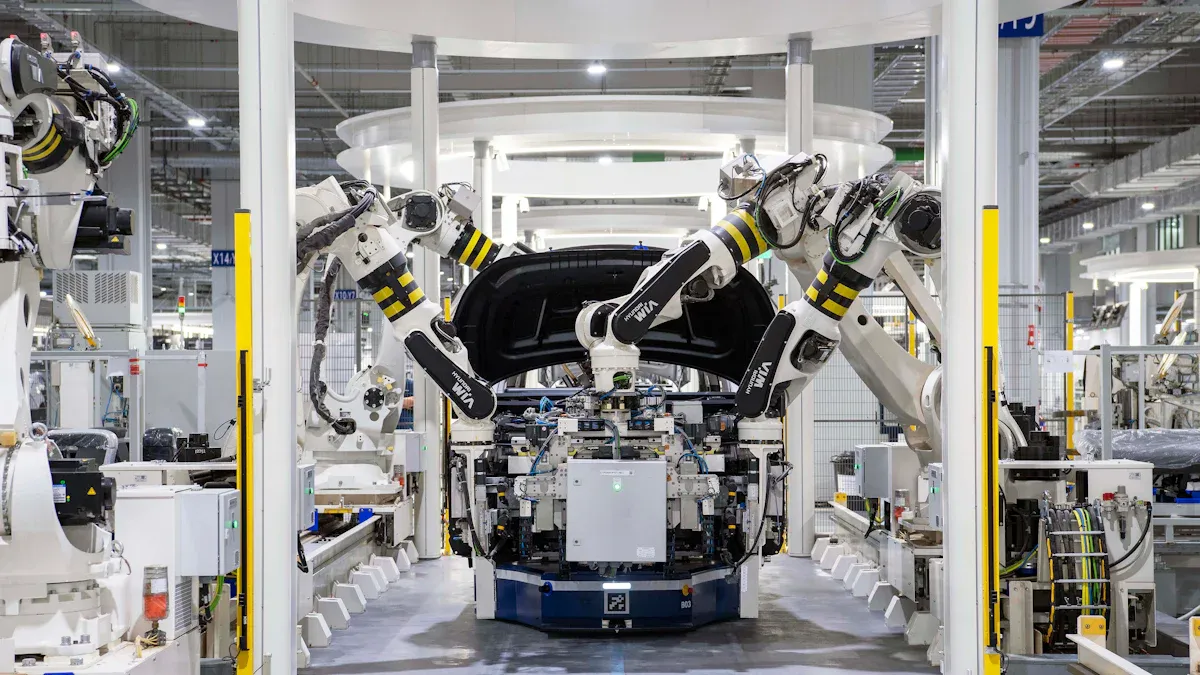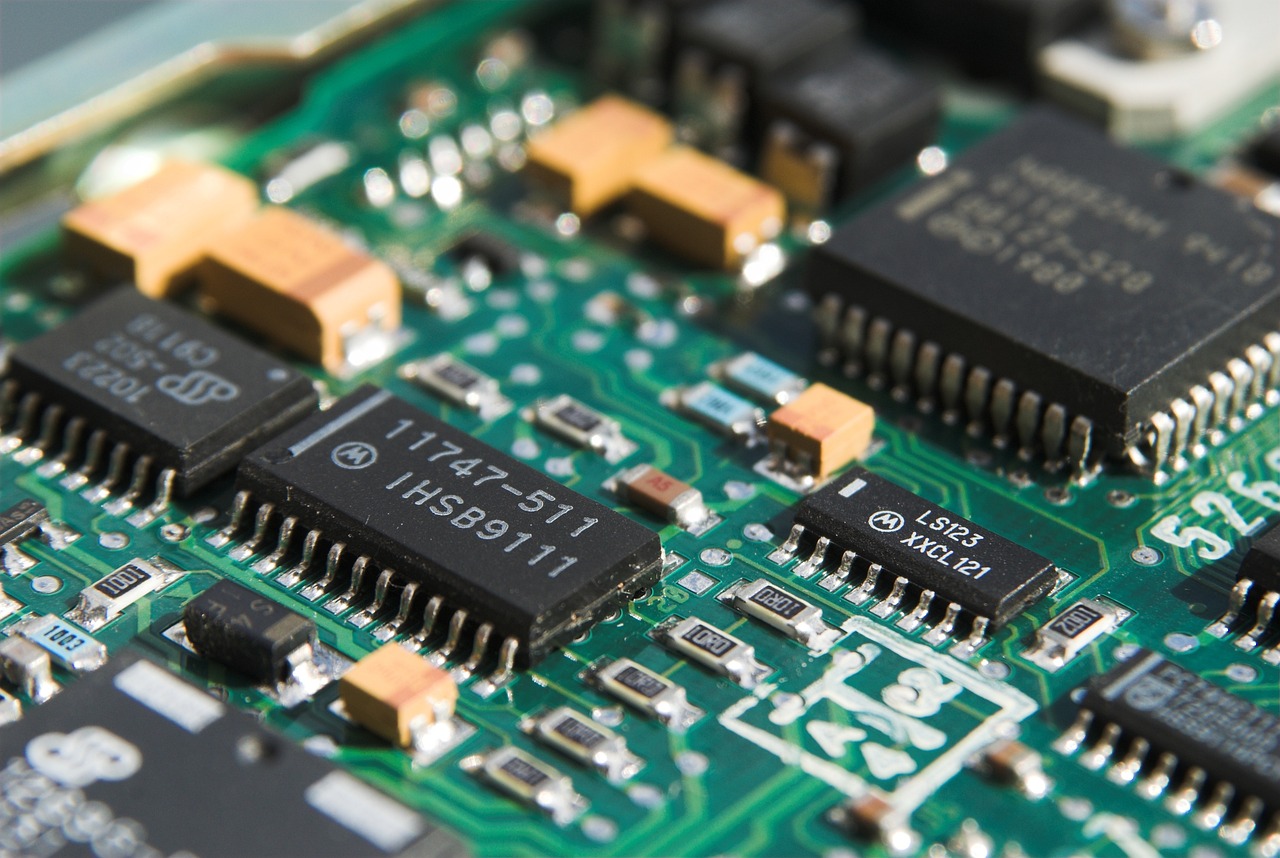Critical Quality Control Measures in Professional Through Hole Assembly Manufacturing

Quality control measures in professional through-hole assembly begin with inspecting the bare board and verifying the design accuracy. These quality control measures help identify issues early, ensuring the products perform better and have a longer lifespan. LTPCBA implements global standards and advanced inspection tools as part of its quality control measures. Continuous worker training is also a key quality control measure that helps maintain product excellence and meet evolving industry demands.
Key Takeaways
Careful design checks and part checks with special software and sensors stop mistakes in assembly and make sure connections are strong and work well. Careful cleaning, putting parts in the right place, and careful soldering help lower mistakes and make the product last longer and work better. Using machine checks like AOI and X-ray with expert visual checks and electrical tests helps find problems early and keeps the quality high.
Pre-Assembly
Design Review
Design review is the first step for quality control in through hole assembly. Engineers at LTPCBA use special software to check every design. They make sure the design rules are followed. They look at hole positions and check if they are within ±0.05 mm. This careful checking stops mistakes during assembly. It also helps make strong connections. The team checks each part’s properties, like reference designators, values, and ratings. They make sure every part does what it should. They use 3D models to see the board. This helps them spot problems and make sure there is enough space for assembly.
Note: Using computer vision and machine learning, like the YOLOv5 model, helps inspect holes and their sizes in real time. This technology gets a high mean Average Precision (mAP) of 0.95. It also lowers human mistakes, which can cause up to 23% of quality problems.
LTPCBA follows rules like IPC-A-610 and ISO9001. These rules set clear goals for quality and acceptance. This makes LTPCBA’s work known around the world.
Quality Metric / Standard | Description | International Aspect |
|---|---|---|
IPC-A-610 | Acceptability of Electronic Assemblies | Global benchmark for quality |
ISO9001 | Quality Management System | Recognized worldwide |
Component Check
Checking components is the next important step. LTPCBA uses machines to check each component’s value, package, and direction before assembly. Sensors and cameras watch the process in real time. This makes the work more accurate and lowers mistakes. For example, force sensors check how hard parts are pushed in. Dynamic torque sensors make sure connections stay tight.
Machines get a 90% one-time assembly success rate. Manual assembly only gets 70%.
Automation saves over 80 minutes per unit during assembly.
Sensors give feedback right away to stop damage and make sure parts are placed right.
By using careful design review and strong component checks, LTPCBA makes sure each assembly starts with good quality and reliability.
Preparation
Cleaning
LTPCBA begins by cleaning every board and component very carefully. Technicians take off dust, oil, and other stuff from all surfaces. They use special aerosol sprays that can reach under and around each part. This way works better than using brushes or swabs. Brushes and swabs can leave some dirt behind. Cleaning the right way stops corrosion and keeps the board working well. If flux residues stay on the board, they can pull in water. This can make leads and contacts rust. These residues also make coatings peel off or come apart. Some leftover chemicals, called ionic contaminants, can make tiny metal branches grow. These branches are called dendrites. Dendrites can cause leaks or short circuits. LTPCBA does a final rinse to make sure nothing dries on the board. This careful cleaning helps every part get ready for assembly and last a long time.
Tip: Cleaning the same way every time with the right sprays helps stop repairs and product problems.
Placement
After cleaning, LTPCBA gets each part ready to be placed. Technicians cut the leads to the right size and check how each part is turned. Machines help line up parts very exactly. Sensors and cameras check if each part is in the right spot and facing the right way. This step helps stop mistakes and makes solder joints stronger. LTPCBA uses process controls to watch every part from start to finish. This system makes sure only clean and correct parts move on. The end result is a better product with fewer mistakes and more trust for users.
Soldering

Process Control
LTPCBA uses advanced process control to make sure every solder joint is good. Technicians watch important things like temperature, soldering time, and how much flux is used. Automated systems use thermocouples and temperature controllers to keep the heat steady. This helps stop problems like cold joints or solder that does not melt all the way. The team changes the wave soldering temperature and conveyor speed for each group of boards. Nitrogen-controlled air stops oxidation, so joints stay strong and shiny.
Tip: If the peak soldering temperature is above 230 °C, bridging defects can drop to only 0.30%. Keeping the temperature above 220 °C makes sure holes fill all the way with no big empty spots.
The table below shows how changing process settings can change product quality:
Parameter Varied | Levels/Steps | Observed Effect on Product Quality and Process Robustness |
|---|---|---|
Hole Diameter | 8 steps | Bigger holes help fill better and make the process stronger; a better gap helps flux and solder flow |
Preheating Temperature | 3 steps | The right preheating lowers problems and makes boards easier to build |
Soldering Time | 2 steps | Good timing helps fill holes well and lowers problems |
Joint Inspection
After soldering, LTPCBA checks every joint for quality. Automated cameras and sensors look for cracks, empty spots, and bridging. Technicians use their eyes, X-ray, and microsection analysis to find hidden problems. They want joints to look smooth and shiny with no gaps or extra solder. Careful process control and checking help LTPCBA reach a 99.5% pass rate, so every customer gets reliable products.
Quality Control Measures

Visual Inspection
Visual inspection is a very important step in quality control. At LTPCBA, trained workers look for many kinds of problems. They check for soldering mistakes, parts that are not lined up, missing parts, solder bridges, and broken traces. Workers use magnifying glasses and digital microscopes to see small problems. These tools help them find things the eye might miss.
Special lights, like angled or backlighting, make it easier to see small issues. Workers can look at hard-to-reach places, like under parts or in tight spots. This helps them find problems that machines might not catch. People can use their judgment, which is helpful for tricky or special PCB designs.
Visual inspection gives quick feedback. Workers can fix problems right away, so they do not get worse. This way does not hurt the board and does not cost much. It works well for small jobs or special orders. Visual checks also help stop PCB failures and make better records.
Workers find many problems, like:
Soldering mistakes
Parts not lined up or missing
Solder bridges
Broken traces
Magnifying tools and microscopes help find small problems.
Special lights show hidden issues.
Skilled workers can check hard spots.
Quick feedback means fast fixes.
Visual checks work with machines and help improve the process.
AOI & X-ray
Automated Optical Inspection (AOI) and X-ray scanning are key steps at LTPCBA. AOI uses cameras and software to scan each board. These systems look for missing parts, wrong placements, and soldering problems. AOI works fast and is very accurate, so it is good for making lots of boards.
X-ray inspection goes even deeper. It lets workers see inside solder joints and under parts where eyes cannot see. X-ray and CT scans show hidden problems, like empty spots, cold joints, and cracks inside. This makes sure every connection is strong and meets high standards.
LTPCBA uses the newest AOI and X-ray machines. These tools help the company reach a 99.5% pass rate. Machines and skilled workers work together to find even tiny problems. This mix of people and technology makes LTPCBA special.
AOI and X-ray give many benefits:
Fast and accurate problem finding
Can check hidden or inside parts
Same results for many boards
Help make the process better and keep good records
LTPCBA uses both people and machines to check quality. This way makes sure every through hole assembly is reliable and works well.
Testing
Electrical
LTPCBA uses electrical testing to find faults in every circuit. This makes sure each board works the right way. In-circuit testing (ICT) is a main method. ICT looks for shorts, opens, and checks component values. Test points on the board help with this process. The size and space of test points help probes touch well.
Parameter | Description / Value |
|---|---|
Test point size | |
Test point spacing | Minimum 10 mil; Recommended 20 mil |
Probe distance | 2.8 mm between probe and probe sensor |
Test methods | ICT for large production; Flying probe for small production |
Technicians use standards like IPC-6012 and IPC-J-STD-001. These rules cover electrical continuity, isolation, and solder joint quality. LTPCBA uses LCR meters to check resistance, capacitance, and inductance. This step makes sure each part works as it should.
Note: Electrical testing finds problems early. It saves money and makes customers happy.
Functional
Functional testing checks if the board does its job. LTPCBA uses test fixtures and software to send signals and measure outputs. This step checks if the board meets design needs and works in real life.
LCR meters check if parts have the right values.
Oscilloscopes look at signal quality.
Power analyzers test voltage and current.
Capacitance tests check if capacitors are correct.
Functional testing also finds soldering and programming mistakes in integrated circuits. LTPCBA uses both people and machines for careful checking. This way makes sure every board is good before shipping. Traceability records link each test to the right board. This helps with quality and makes things better over time.
Final Assurance
Documentation
LTPCBA thinks documentation is very important for quality control. Every assembly gets its own special number or barcode. This connects each part to its making steps, test results, and material papers. The company keeps careful records using smart computer systems. These records show how the product is used, what it faces, and when it gets fixed. New technology like RFID and IoT devices collect data by themselves and help find problems early. LTPCBA also checks and reviews documents often to make sure everything is right. Traceability means you can follow each part from raw materials to finished product and even after it is made. This helps find problems fast and fix them. Good documentation makes sure quality control works well and everyone can see what happens.
Special numbers link products to their past.
Records show every step in making the assembly.
Real-time checks and reviews help keep things reliable.
Packaging
LTPCBA uses strong packaging to keep products safe when shipping. The team picks the right materials and controls how things are sealed and closed to stop problems. They test and check packages often to make sure nothing breaks or leaks during shipping. Custom packaging keeps each assembly safe and helps with testing and setup. Extra steps like over-molding and encapsulation make products last longer and protect against water, shaking, and rust. Other ways, like heat shrink and potting, help stop scratches and damage from the environment. Before shipping, they test cables to make sure they work and are strong. These packaging steps keep products safe from the factory to the customer.
Strong packaging and good steps stop damage.
Custom packages help products arrive safe and ready.
Extra protection makes sure assemblies last in real life.
Using many steps for Quality Control Measures makes through hole assembly more reliable. LTPCBA uses digital twin modeling to help with this. This method can predict results with 91.64% accuracy. It also helps reach a 99.5% pass rate.
Companies should look at their own steps often. They can trust LTPCBA to give good service that puts customers first.
FAQ
What international standards does LTPCBA follow for through hole assembly?
LTPCBA uses ISO, IATF, and UL standards. These rules help make sure the assembly is good quality and trusted around the world.
How does LTPCBA ensure traceability in production?
LTPCBA gives each assembly its own barcode. This barcode connects the product to its parts, tests, and records from making it.
Why is automated inspection important in through hole assembly?
Automated inspection finds problems fast. It makes checking more exact, lowers mistakes by people, and helps keep a 99.5% pass rate.
See Also
Essential Quality Control Steps For Through Hole PCB Assembly
Top SMT Assembly Techniques To Ensure Quality Electronics
Innovative Testing Approaches For Through Hole PCB Assembly
Steps To Ensure Perfect BGA Assembly Through Quality Control
